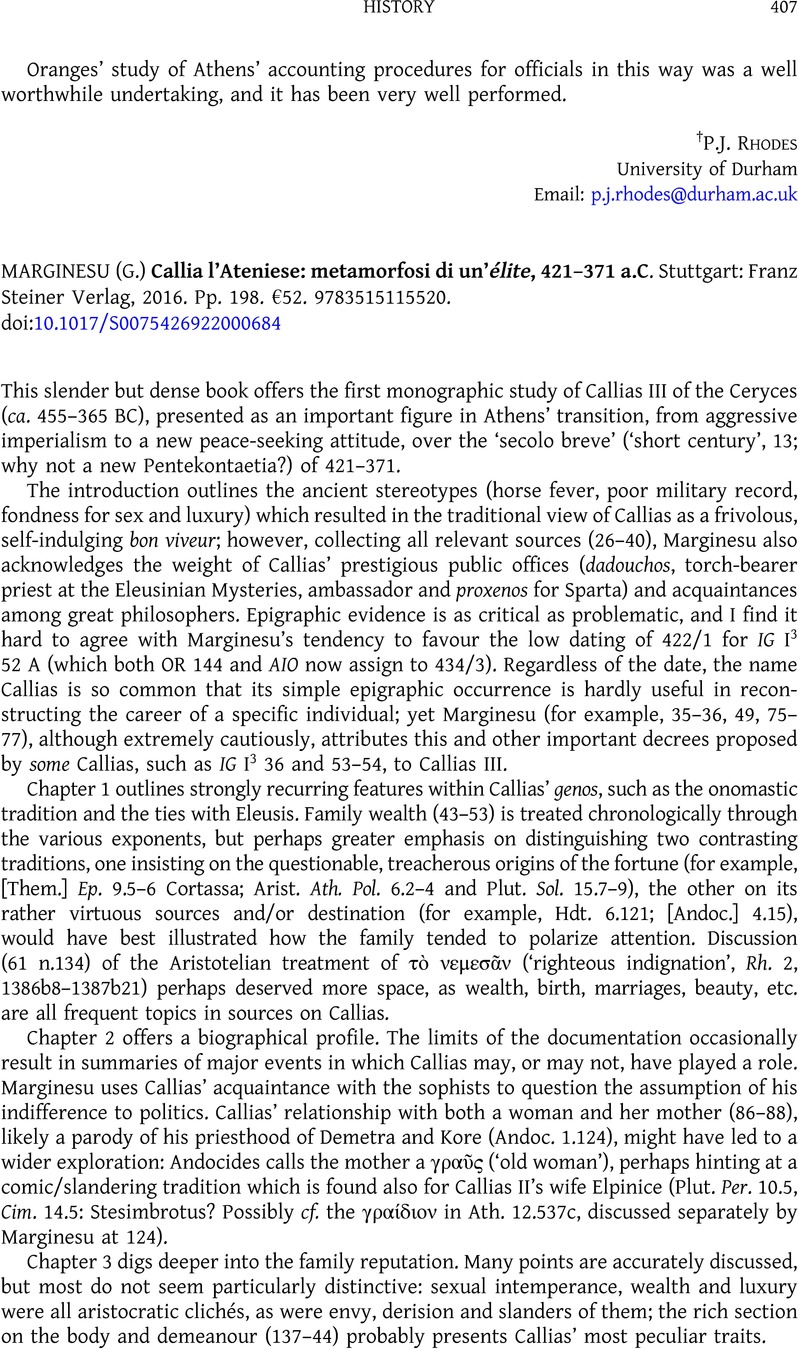No CrossRef data available.
Article contents
(G.) MARGINESU Callia l’Ateniese: metamorfosi di un’ élite, 421–371 a.C. Stuttgart: Franz Steiner Verlag, 2016. Pp. 198. €52. 9783515115520.
Review products
(G.) MARGINESU Callia l’Ateniese: metamorfosi di un’ élite, 421–371 a.C. Stuttgart: Franz Steiner Verlag, 2016. Pp. 198. €52. 9783515115520.
Part of:
History
Published online by Cambridge University Press: 11 April 2023
Abstract
An abstract is not available for this content so a preview has been provided. Please use the Get access link above for information on how to access this content.

- Type
- Reviews of Books: History
- Information
- Copyright
- © The Author(s), 2023. Published by Cambridge University Press on behalf of the Society for the Promotion of Hellenic Studies


